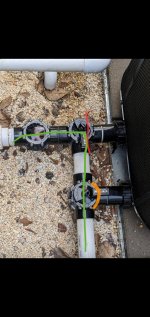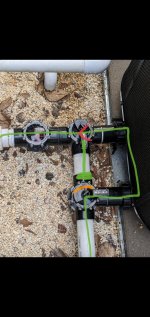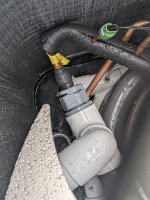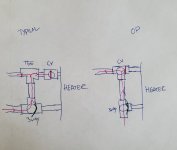I understand what you're saying. And perhaps I'm visualizing this wrong. But hear me out:Putting the CV on a 3 way will only work if the valve has one input with two outputs.
The CV flapper is positioned over the input port and will prevent backflow to the input pipe. It will not prevent siphoning or backflow between the output ports.
If a 3 way is installed to select between two inputs for one output the CV will not work as it would be of little value on one inout and not the other.
Overall a CV inserted in a 3-way diverter can be very confusing as to what the CV is actually doing.
- When the first 3-way is in bypass mode, the flow will continue in a straight path and will close the new CV to the heater return.
- When the first 3-way is sending water into the heater, it will open the CV and will indeed exit both straight and left, but the left will just become a pressurized dead-end.
I'll attach a diagram of what I'm describing in OPs case. Red is CV behavior, orange is first 3-way diverter position, and green is flow.
Help me find the fatal flaw?
This would an ideal solution for the OP because it eliminates the potential to deadhead his pump.
Attachments
Last edited:





